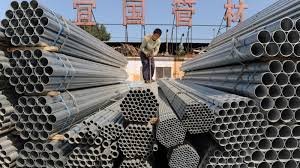This week, after a tumultuous and controversial U.S. presidential election, Donald Trump secured a victory, winning the presidency for his second term. His victory not only surprised many political observers but also sparked speculation about what policies he will pursue during his second term in office. Given his proven political experience during his first term and his approach to both domestic and international issues, many analysts predict that Trump’s foreign policy will remain dominated by nationalist and protectionist strategies, with China as a central focus.
During his first term, Trump was known for his tough stance on China, which he considered a primary challenge to the global economic dominance of the U.S. The trade conflict between the U.S. and China resulted in high tariffs imposed by the U.S. on Chinese goods and vice versa. While the two countries signed the phase-one trade deal in January 2020, tensions between them have not fully dissipated. Issues such as intellectual property rights, political influence in the Asia-Pacific region, and technological policies like Huawei remain significant points of contention.
With Trump’s re-election, it seems likely that he will intensify his protectionist policies toward China, further strengthening his “America First” agenda. Having no further electoral ambitions, Trump is free from domestic political pressures that may have previously constrained more controversial policies. As president, he is expected to take even more aggressive steps to confront what he sees as the rise of China. Trump has repeatedly stated that China is the U.S.’s main rival in the coming decades, and it is highly probable that he will continue to rely on tactics like imposing additional tariffs, restricting access to the U.S. market, and mobilizing U.S. allies to counter China’s economic and geopolitical influence.
One of the defining features of Trump’s first term was his combative stance on China, which he saw as a central challenge to U.S. global dominance. The U.S.-China trade war, which unfolded during his administration, resulted in the imposition of high tariffs on Chinese products. In return, China applied retaliatory tariffs on U.S. goods. While the Phase-One trade deal was signed, the underlying tensions between the two countries did not completely dissipate. Issues like intellectual property theft, political influence in the Asia-Pacific region, and technological competition, particularly around companies like Huawei, remain significant challenges.
Trump’s second term is expected to double down on policies designed to confront China. With no re-election bid looming, he is likely to take a harder line. His administration is expected to pursue additional tariffs on Chinese goods, block Chinese companies from accessing U.S. markets, and continue the broader campaign to reduce U.S. dependence on Chinese manufacturing. The administration may also ramp up pressure on other countries to align with U.S. policies on countering China’s economic rise and its influence in international organizations.
Trump is also expected to continue limiting China’s access to critical U.S. technology sectors, such as 5G, artificial intelligence, and cybersecurity. This will likely involve tightening export controls on sensitive technologies and increasing scrutiny of Chinese companies operating in the U.S. The tech war with China is expected to intensify, with the potential for broader economic decoupling between the two nations.
Beyond China, Trump’s second term will likely continue to emphasize international trade policies that prioritize U.S. interests. He has long criticized multilateral trade agreements, arguing that many of them disadvantage the U.S. In this context, the re-election victory signals that Trump will persist in altering global trade relationships to better serve America’s needs.
Trump’s preference for bilateral trade agreements over multilateral ones is likely to remain. He has shown little interest in returning to agreements like the Trans-Pacific Partnership (TPP) or the Paris Climate Agreement, both of which he pulled the U.S. out of during his first term. Instead, he has focused on renegotiating trade deals to ensure they benefit the U.S. more directly. The new United States-Mexico-Canada Agreement (USMCA) replaced NAFTA and is seen as a model for future trade negotiations with other countries.
While Trump’s approach to trade has been heavily criticized by some business sectors in the U.S. for its impact on supply chains and costs, he is expected to continue using tariffs as a tool to discipline trade partners he believes are engaging in unfair practices. His administration will likely maintain, and perhaps even expand, tariffs on goods from countries with which the U.S. runs large trade deficits. This will particularly focus on reducing the trade imbalance with countries like Germany and Japan, as well as continuing to challenge China’s trade practices.
In addition to foreign policy, Trump’s domestic economic policies during his second term will likely continue to emphasize job creation and the revitalization of American manufacturing. One of the key priorities of Trump’s first term was to address the decline of U.S. manufacturing, which had suffered significant losses to outsourcing and offshoring. Trump’s “America First” rhetoric resonates with many blue-collar workers in the Rust Belt and beyond, and he has committed to policies aimed at reversing this trend.
Trump is expected to continue implementing fiscal policies that incentivize domestic manufacturing and bring back jobs to the U.S. This could include tax incentives, deregulation efforts, and direct investments in key industries like steel, aluminum, and automotive manufacturing. By encouraging U.S. companies to relocate their supply chains back to America, he aims to create a resurgence in U.S. manufacturing and reduce reliance on foreign-made products.
Lower corporate taxes and regulatory rollbacks are also likely to remain central to Trump’s economic agenda. These policies were designed to spur investment and make U.S. companies more competitive in the global marketplace. Trump’s administration will likely continue to push for corporate tax cuts, which he sees as a way to spur economic growth and job creation.
On the domestic front, energy policy will remain a major focus for Trump in his second term. Trump has long been a supporter of fossil fuels, including coal, oil, and natural gas, and his administration is expected to continue policies that prioritize U.S. energy independence. Trump will likely press forward with drilling and exploration in federal lands, including in the Arctic National Wildlife Refuge (ANWR), despite opposition from environmentalists.
In contrast to the environmental agenda pushed by his Democratic rivals, Trump is expected to continue downplaying the need for aggressive climate change policies. His administration is likely to favor deregulation in the energy sector and support the continued development of the oil and gas industry, which Trump views as crucial to U.S. economic growth. The U.S. will continue its stance against international climate accords, likely maintaining its position outside of the Paris Agreement.
In addition to China, trade, and energy, Trump’s second term could see a further strengthening of his “America First” policy in other areas. Immigration is likely to remain a central issue, with Trump advocating for stricter border controls, more aggressive enforcement of immigration laws, and a continuation of his controversial stance on sanctuary cities.
The defense and security policy areas are also expected to reflect Trump’s commitment to maintaining U.S. military dominance. Expect a continuation of the “America First” doctrine in military spending, with an emphasis on modernization of U.S. nuclear capabilities and cyber defense.


























































